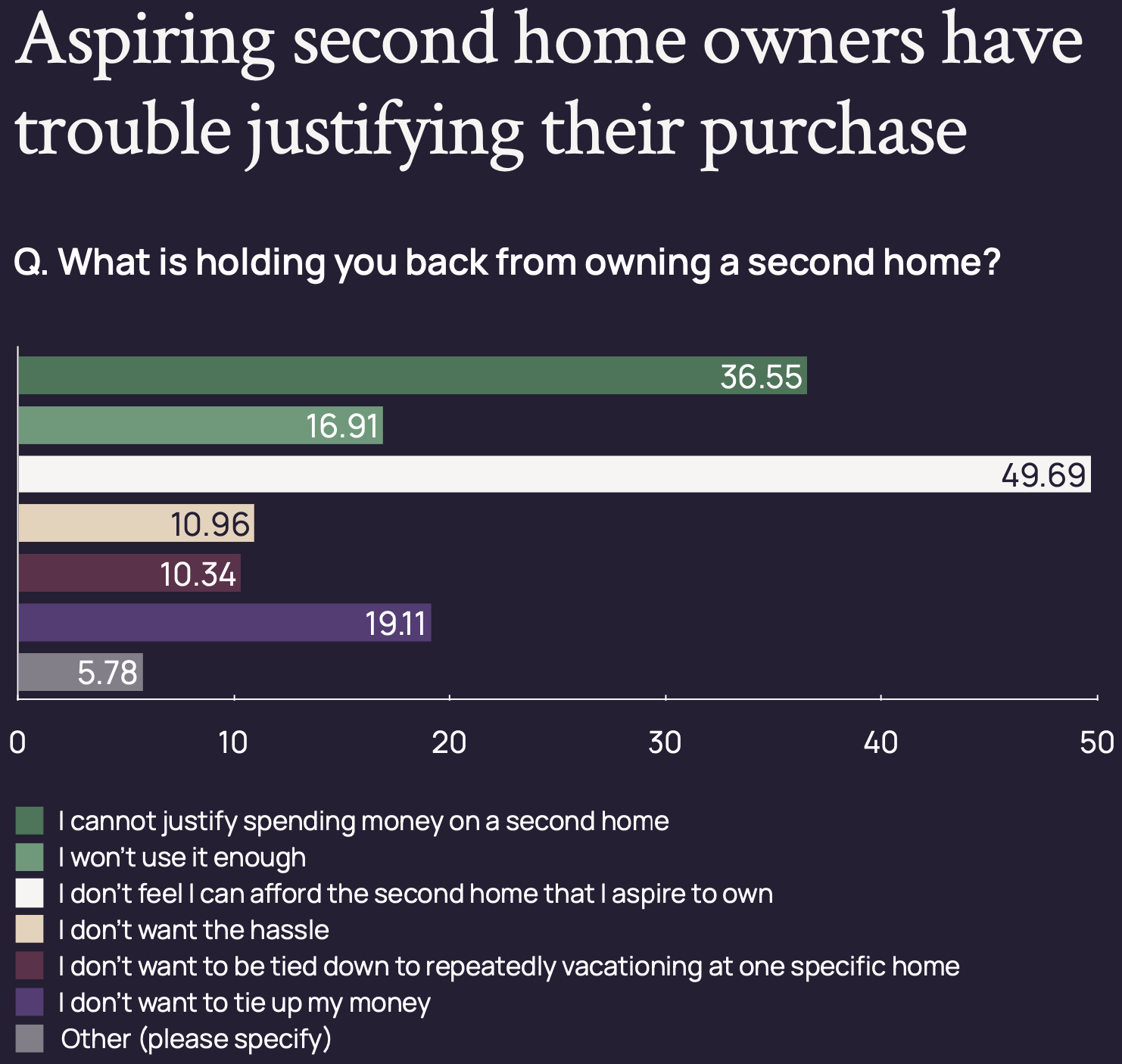Inman News
55.7% of Americans who don’t own a second home say they now want one, compared to just 46.4% who expressed a desire for a second home prior to the pandemic.
The benefits of owning a second home have become appealing to one and all during the pandemic.
A new report released by Pacaso, a startup that facilitates second homeowning by co-ownership, in tandem with The Escape Home, a newsletter for aspirational and actual second homeowners, shows that 55.7 percent of Americans who don’t own a second home say they now want one, compared to just 46.4 percent who expressed a desire for a second home prior to the pandemic.
“I think COVID has boosted some of these numbers, particularly the numbers around interest levels increasing by about 20 percent,” Pacaso CEO Austin Allison, told Inman. With more people working remotely, he said homeowners have been taking advantage of the opportunity to work in new places with the use of second homes.
But, who takes the reins in making a second home a reality has upended the traditional homebuying gender dynamic, according to the report’s data.
Historically, the female partner in a relationship makes about 91 percent of the decisions around buying a primary home. However, during Pacaso’s survey period between October and November 2020, nearly 70 percent of the people who contacted Pacaso about buying a second home were men. (Pacaso told Inman its sample of same-sex couple survey responses was too small to report on.)
Out of those women who participated in the survey and said their male partners adopted most of the responsibilities associated with buying a second home, 70 percent said it was because their partner knew more about real estate, and 60 percent said it was because he had more free time in which to do so.
Amid school closures and many children learning remotely from home, parents have become more burdened in juggling work, childcare and household duties, with women often bearing the brunt of the work. A U.S. Census Bureau survey taken in July showed that about one in five working adults who were not working during the pandemic stated their reason for not doing so was because their childcare plans had been disrupted by the pandemic. Out of those who were not working, women between the ages of 25 and 44 were about three times as likely to not be working than men because of childcare duties.
“We are constantly faced by news about women dropping out of the workforce amid COVID-19, overwhelmed with childcare, teaching and working,” S. Mitra Kalita, founder and publisher of The Escape Home, stated in Pacaso’s fourth quarter second home sentiment report. “Perhaps this is a hopeful sign that men are taking on more of the ‘mental load’ and taking charge of making the shared dream of second homeownership a reality.”
Those individuals dreaming of owning a second home but who haven’t been able to make it a reality seem to largely be tripped up by the expense and deciding on the home’s location.
At 49.7 percent, almost half of respondents who haven’t pulled the trigger yet said it was because they couldn’t afford the second home they wanted. Another 36.6 percent said they just couldn’t justify spending the money on a second home.
“It’s impossible to ignore the hardship that COVID has created for certain families financially. Even for families that are in a fortunate enough situation to have not been financially impacted by COVID, I think [they] are thinking twice now about how they spend their money,” Allison told Inman. “And a second home, whether you’re buying a whole one or part of one, is a discretionary purchase just by its nature.”
He added, “I think during times like this, we’re all reminded that we need to make smart financial decisions. So, I think some of that concern is probably influenced by the times that we’re in, but even pre-COVID, this is the number one thing by far that holds people back from being able to purchase a second home, and I think the real reason why is underutilization.”

Credit: Pacaso
Although potential second homeowners these days show a clear preference for being able to drive to their second home (70.9 percent) over flying to it (26.7 percent), a substantial 45.1 percent aren’t sure exactly where they want that home to be.
While most second homeowners surveyed purchased their second home prior to COVID-19 at 87.7 percent, 12.3 percent proceeded with a second home purchase amid the throes of the pandemic. How current owners use their second home was largely split between those who use it for personal use (43.9 percent) and those who rent it out (42.5 percent). Another 8 percent co-own their second home with another family, and 5 percent stated they use it for other purposes.
Nearly one-third (28.8 percent) of second homeowners reported that they’ve used their second home during the pandemic more than they did previously, while 52.9 percent stated that they use it about the same amount. Post-pandemic, 34.5 percent of second homeowners believe they’ll return to using their second home the same amount of time they had prior to the public health crisis.
When it comes to geography, second homeowners ranked properties near a beach or a lake highest, followed by mountain homes, then country and ranch locations. Urban or city locations for a second home were ranked lowest.
